Interview Special: Bolshoi Dancers Natalia Osipova & Ivan Vasiliev | reviews, news & interviews
Interview Special: Bolshoi Dancers Natalia Osipova & Ivan Vasiliev
Interview Special: Bolshoi Dancers Natalia Osipova & Ivan Vasiliev
Lovers on stage and off, two young stars bring back English rarity
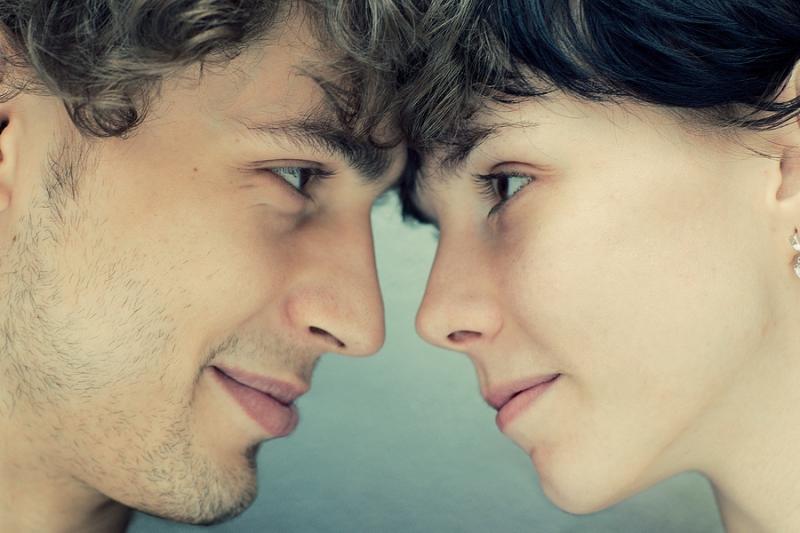
“What I love about her is her emotion, her true emotion. She’s a ball of energy and emotion all together, quite an amazing thing. From the first time I saw her, I thought I want her to be my girlfriend.” Ivan Vasiliev, the young Bolshoi Ballet superstar, is talking about his girlfriend - though he could also be Romeo talking about Juliet.
For one thing, London is the city in which the two became recognised as something extraordinary, their acclaim from the British critics giving them world careers that barely three years afterwards catapult them from city to city around the globe. Inside the mighty Bolshoi, with its hierarchy and clusters of great dancers, it has been harder for some to swallow that these two somewhat unorthodox artists embody an electric life force on the stage that even people without ballet knowledge feel at once.
The black-haired, alabaster-skinned Osipova (born 18 May 1986) was only a 20-year-old in the corps de ballet when during the Bolshoi Ballet’s 2006 London tour she leapt breathtakingly onto the Covent Garden stage as the merry heroine of Don Quixote, Kitri. Within a few seconds it was quite clear that Osipova was the Kitri that everyone would want to see in future, so hair-raisingly exciting was the dancing, so effervescent and adorable the personality.
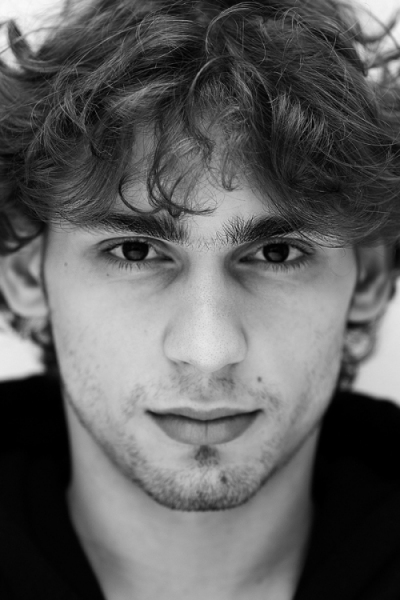 Then that autumn a short, muscular 17-year-old arrived from Minsk, named Ivan Vasiliev (born 9 January 1989), with word preceding him of a phenomenal jumping ability - and suddenly the Bolshoi had the two most talked-about new dancers in the world in their ranks.
Then that autumn a short, muscular 17-year-old arrived from Minsk, named Ivan Vasiliev (born 9 January 1989), with word preceding him of a phenomenal jumping ability - and suddenly the Bolshoi had the two most talked-about new dancers in the world in their ranks.
The pair performed Don Quixote together, and it seemed as if two winged gods of the air had gone dancing in competition, flying ever higher in more and more incredible leaps and spins, and with an irresistibility of personality on both sides that crackled with zest and young mischief.
The youngsters had been taken on by the then Bolshoi director Alexei Ratmansky, both as something of a gamble. Osipova was a former gymnast with a recklessness and athleticism as a ballet student that to many seasoned Bolshoi coaches looked unclassical, and therefore of use only in bravura comedienne roles, not the classical ballerina parts. And Vasiliev was hampered by having no Bolshoi training pedigree. He had been raised from the regions in Ukraine, groomed to win competitions, which he did with more and more improbably brilliant stunts. He was short, sturdy, not in the least classical of line. Despite the thrills that both could offer, the traditionalists were exceedingly doubtful about Ratmansky’s fasttracking them ahead of the Bolshoi’s existing global stars.
However the Bolshoi tour to Covent Garden in summer 2007 changed that. Ratmansky leapfrogged the youngsters into the first night of Don Quixote, and two superstars were born. Superlatives sprayed like fireworks around them, not only to their glory, but to the glory of an apparently refreshed, rejuvenated Bolshoi. Back in Moscow Ratmansky groomed each of them carefully into unexpected roles that a sizeable camp of coaches and public thought inappropriate for their age and type: Osipova into the gossamer leading role of La Sylphide and Vasiliev, still only 18, into the iconic Bolshoi role of Spartacus, the heroic leader of a slave rebellion.
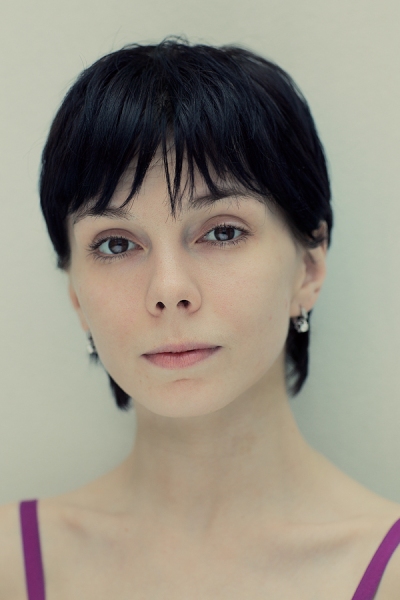 Ratmansky’s instincts proved well-grounded. Osipova’s phenomenal jump that fired like a rocket in Don Quixote now floated soft and weightless through the air in Bournonville’s fairytale. The athletic muscles vanished into transports of ethereality and she used her impetuous, gamine femininity to devastating effect.
Ratmansky’s instincts proved well-grounded. Osipova’s phenomenal jump that fired like a rocket in Don Quixote now floated soft and weightless through the air in Bournonville’s fairytale. The athletic muscles vanished into transports of ethereality and she used her impetuous, gamine femininity to devastating effect.
Meanwhile, Yuri Grigorovich's Spartacus, which had long seemed an out-of-date old Bolshoi warhorse left over from the Soviet era, was reborn in the boy wonder from Minsk, a fabulous physicality turning out to be allied to a deep and serious dramatic soul, bringing the ballet a new young emotional relevance.
Since then, both have been rapidly fed the mainstream classical roles that both longed for: Osipova has triumphed not only in the comedies Coppelia and Le Corsaire, but has expanded the romantic “white” ethereality promised in that Sylphide with heartrending debuts as Giselle and Nikiya in La Bayadère, as well as picking up a bouquet of new contemporary roles. American Ballet Theatre have introduced her to MacMillan's Romeo and Juliet and The Sleeping Beauty, and make no secret that they would like to have her permanently in New York.
Vasiliev has deepened the drama of his Spartacus and, though still only 22, has lightly and easily assumed the mantle of the Bolshoi's iconic superman. THough he feared his build might prevent the Bolshoi casting him as a prince and lover, he has just done his first Albrecht in Giselle, with Osipova. He has moved up in La Bayadère from the Golden Idol stunt soloist to the Prince, Solor. Here in London this week he is performing his first Romeo.
To cap all this onstage excitement, the two most thrilling young dancers in the world became engaged this year and plan to marry.
For Peter Schaufuss, now 62, and the son of the original Juliet in Frederick Ashton’s Romeo end Juliet, this was all doubly wonderful. To have the Bolshoi stars as the lovers when he brought this ballet to London would close a sentimental circle in history. The reason for the scarcity of appearances of this particular version, though it is by the English genius Frederick Ashton, is precisely due to the Bolshoi.
The Bolshoi Ballet's landmark debut tour to London in 1956 gave the first Western view of the first Moscow ballet created for Prokofiev's score, a grandiose, spectacular dramballet of 1940 by Leonid Lavrovsky, which had a seismic effect on the way people listened to the Prokofiev music afterwards. Ashton, who had already created one Prokofiev ballet, Cinderella, wanted to do a Romeo and Juliet next, but the Sadler's Wells Ballet director Ninette de Valois had been to Russia and knew that the Bolshoi was bringing something whose shadow would be almost impossible to escape.
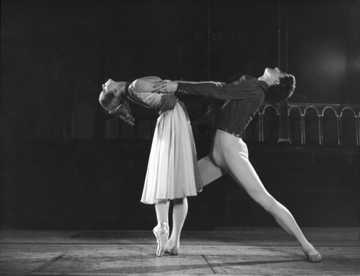 So Ashton took his chamber-sized ideas to Copenhagen, and made it for the Royal Danish Ballet, and it would be Kenneth MacMillan who would finally top the Bolshoi Romeo and Juliet with a major Royal Ballet version that is now the most popular worldwide.
So Ashton took his chamber-sized ideas to Copenhagen, and made it for the Royal Danish Ballet, and it would be Kenneth MacMillan who would finally top the Bolshoi Romeo and Juliet with a major Royal Ballet version that is now the most popular worldwide.
Yet it was always painful that in the turbulent wake of the Bolshoi and of the MacMillan, the more intimate, Shakespearean version created by Ashton was lost. (Pictured left, Ashton's original Romeo Henning Kronstam with Kirsten Simone as Juliet, 1956, © Mydtskov) Ashton briefly considered "opening up its seams" for London when he was the Royal Ballet's director in the Sixties, but took the generous - and wise - decision to let the younger, bolder MacMillan have the field.
For Schaufuss, the Ashton is a personal album. His mother Mona Vangsaa was the original Juliet, with his father, Frank Schaufuss, as Mercutio. It has only been performed in Britain by the English National Ballet, when Schaufuss was its artistic director from 1984 to 1990. With the MacMillan firmly established in Covent Garden and Birmingham Royal Ballet, and John Cranko’s taken up by Scottish Ballet, Ashton’s chamber-sized version belongs now to Schaufuss. Bringing it back to London after 25 years, he wanted to make it something special - and with a showman's instincts, he timed his coup.
“First, I wanted the best-possible two young dancers to do it, because that was very much in Fred’s spirit. Most choreographers want their ballets to do be danced by the best dancers. And I was thinking, who are the young ones now? Well, it's these two. And knowing that Ivan had never done Romeo, I thought they would find it special too.
“And the other reason is that the whole reason this ballet was not staged in the Royal Ballet was because of the Bolshoi. So I thought, okay, the two best young dancers today are the Bolshoi’s. So in that way history comes in a justified circle. It’s a very nice personal reason for me too.”
ISMENE BROWN: And I was just talking about this to Charlotte MacMillan [our photographer], saying that the reason her father’s Romeo and Juliet happened instead was because Ashton’s didn’t, which was because of the Bolshoi…
PETER SCHAUFUSS: Which is lovely, and why it is so appropriate that Charlotte is taking these photographs.
Are you doing it exactly as Ashton staged it with your mother or did you change it?
No, when I did it with ENB in 1985 with Fred, at that time he was interested in making it bigger - obviously because all the productions since his had been bigger. So he made it bigger at that time. I’ve tried to restore it to what I remember in Copenhagen, which was a much smaller production.
Ashton originally wanted to do it much more like the play, as he hadn’t seen any ballet productions of it, so he did it entirely from Shakespeare’s text. It was very much from the cast of characters, and he only put in some ensemble dances because he was working with a large company. But these had nothing to do with the story, and he told me he’d have preferred to do it without them, so it’s closer to the Shakespeare play.
That’s what I’ve done now. Taken away the ensembles he didn’t like much, and kept it closer to the characters. We’ve also returned to the original sword fights, which were more musically timed in 1955. So it’s very concentrated now. Fred said to me, any ballet longer than 2 hours and 15 minutes needs to be shorter. So that’s what I’ve got to.
Do you have a notation of the original?
Yes, we have a notation, and I also have the original 1955 movie, black and white, a silent movie. I have gone back to that source.
The fliers say you’ve adapted it for the 21st century… It’s just PR?
No, not all PR, because I’ve used the original costume designs, which were very rich and elaborate, but I’ve had a new design for the stage. One thing Fred was annoyed about was that for every scene change we had to close the curtains, and the public had to look at the coats of arms of the Capulets and Montagues, and hear the scenery rumbling around behind it. So I had a new design done by an Italian designer so that the scenes can change without us having it chopped up. If that’s a 21-century update, then that’s it.
Next page: Q&A with Natalia Osipova and Ivan Vasiliev
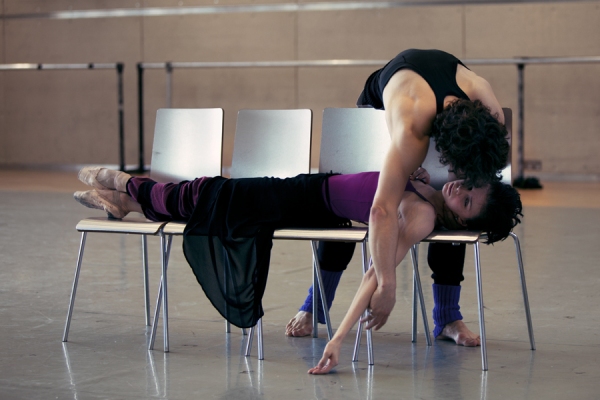 For Natalia and Ivan, the show will be a first. Natalia has never danced an Ashton before, though she will be doing La fille mal gardée with Paris Opera Ballet next season; Ivan has never danced a Romeo. For our interview, during rehearsal at London's Jerwood Space, Ivan proved a willing translator, though inevitably the detail of their answers can't be rendered. I asked them if being engaged is easy to handle in combination with working together.
For Natalia and Ivan, the show will be a first. Natalia has never danced an Ashton before, though she will be doing La fille mal gardée with Paris Opera Ballet next season; Ivan has never danced a Romeo. For our interview, during rehearsal at London's Jerwood Space, Ivan proved a willing translator, though inevitably the detail of their answers can't be rendered. I asked them if being engaged is easy to handle in combination with working together.
Ivan: No, it’s nice. Of course, it can be hard when we’re rehearsing together and it can be nervy, but on stage it’s very very very very good indeed. Because we understand each other much better. I know Natasha very well and Natasha knows me very well.
What ballets have you danced together now?
Ivan: Don Q, Corsaire, Bayadère, Giselle, Flames of Paris, Bright Stream, Fille mal gardée next season.
So it’s a lot. But you still continue to dance with others.
Ivan: Yes.
Natalia: Of course we prefer to dance together but sometimes we must dance with others. We don’t have a plan about it. We just love dancing. But we don’t always have the same preference. I don’t dance Spartacus and I love contemporary.
Ivan: And I don’t love Forsythe.
You were stunning in Twyla Tharp’s In the Upper Room, Natalia.
Natalia: I really love dancing that one.
And Natalia, you just filmed 3D Giselle with the Mariinsky Ballet. This new technique of filming should be very exciting for the public to see - how do you feel about it? It really enhances the dynamics of the experience.
Natalia: It was interesting only from the point of view that people who can’t come to Moscow or St Petersburg can have the option of seeing something. But live performance is really special and quite different.
Ivan: I think the audience should come to the theatre and see it live, not watch it in recording.
Watch Osipova and Vasiliev in a trailer for this production by Peter Schaufuss Ballet
When you are not working in the studio, are you very different people? On the stage you both come across as very lively, bright, funny, dynamic… but off stage I find both of you very thoughtful. Are you quiet people?
Ivan: No! We’re not quiet.
Natalia: No, we’re very emotional off stage. If we’re tired, we’ll be quiet, but otherwise we’re lively, just like on stage.
Do you follow your instincts in your performance of characters, or do you do a lot of reading and listening to music?
Natalia: It’s more instinctive, as far as I am concerned. Books or movies can’t always help.
You’ve read the Shakespeare Romeo and Juliet?
Ivan: Of course.
Does it reach you, the language, or does it feel archaic?
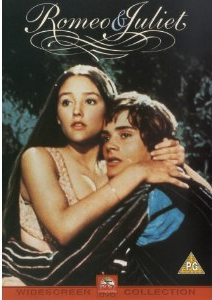 Natalia: it’s amazing, it’s incredibly moving. I also love that Zeffirelli movie of Romeo and Juliet, it’s very touching. It’s realistic, very true - you feel the emotions. Olivia Hussey is very much how I see Juliet.
Natalia: it’s amazing, it’s incredibly moving. I also love that Zeffirelli movie of Romeo and Juliet, it’s very touching. It’s realistic, very true - you feel the emotions. Olivia Hussey is very much how I see Juliet.
What about Baz Luhrman’s Romeo+Juliet?
Ivan: I don’t like it. She likes it.
Natalia: I like it very much.
Ivan: I don’t like it when people take a piece of history and change it to modern. I don’t like Mats Ek’s Giselle - he changed something old. If you do something new, you should do something completely new.
Natalia: I loved that Mats Ek one. I love the Luhrman movie.
Ashton style isn't anything like the athletic leaps you're both known for at the Bolshoi.
Ivan: I think dancing is not just about leaps and pirouettes, it always must be about emotion and expressivity.
Another thing that's different - how are you going to manage nine performances in a single week?
Natalia: It would take more than two months to get that number of performances at the Bolshoi.
Ivan: It will be wonderful. I wish it was like that every week.
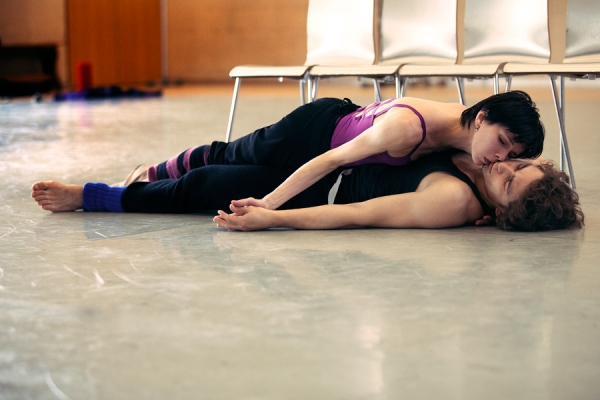
What happens next for you both?
Ivan: Natasha goes to Japan with American Ballet Theatre after Romeo, then Wayne McGregor's Chroma in Bolshoi on 25 July. Next season we’re doing Fille mal gardée and maybe we’ll be in Sleeping Beauty. Yuri Grigorovich is doing a new production for the Bolshoi. We’ll have to see.
What’s going to happen with the reopening of the refurbished Bolshoi Theatre later this year? It’s a very traditional place. You both love classical?
Natalia: Of course now we’re young and have the strength, we prefer classical. But I can’t say it’s the best thing for me to be looking forward to just Swan Lake and Sleeping Beauty. I love dramatic ballets more. Nobody knows whether there’ll be more contemporary ballets put on. The Bolshoi’s first base is classical, and it needs to have the best classical performances in the world.
Meanwhile, Ivan, here you have nine performances in a single week of Romeo. Is it a good feeling?
Ivan: Now, yes. Before, I didn’t feel like a Romeo inside, but now I do feel I can do it.
Have you decided when to marry?
Ivan: After work!
Peter: I will marry you on the stage after the last Romeo, in my Friar Laurence costume.
- Natalia Osipova and Ivan Vasiliev dance Ashton's Romeo and Juliet with the Peter Schaufuss Ballet at the London Coliseum from tonight (preview performance) till Sunday. Tomorrow's performance is a gala in aid of charity with a specially invited cast of former stars in the main mime roles
Watch a young Johan Kobborg and Michelle Larsen with the Royal Danish Ballet in the Ashton R&J Bedroom pas de deux
Explore topics
Share this article
The future of Arts Journalism
You can stop theartsdesk.com closing!
We urgently need financing to survive. Our fundraising drive has thus far raised £49,000 but we need to reach £100,000 or we will be forced to close. Please contribute here: https://gofund.me/c3f6033d
And if you can forward this information to anyone who might assist, we’d be grateful.

Subscribe to theartsdesk.com
Thank you for continuing to read our work on theartsdesk.com. For unlimited access to every article in its entirety, including our archive of more than 15,000 pieces, we're asking for £5 per month or £40 per year. We feel it's a very good deal, and hope you do too.
To take a subscription now simply click here.
And if you're looking for that extra gift for a friend or family member, why not treat them to a theartsdesk.com gift subscription?
more Dance
 'We are bowled over!' Thank you for your messages of love and support
Much-appreciated words of commendation from readers and the cultural community
'We are bowled over!' Thank you for your messages of love and support
Much-appreciated words of commendation from readers and the cultural community
 R:Evolution, English National Ballet, Sadler's Wells review - a vibrant survey of ballet in four acts
ENB set the bar high with this mixed bill, but they meet its challenges thrillingly
R:Evolution, English National Ballet, Sadler's Wells review - a vibrant survey of ballet in four acts
ENB set the bar high with this mixed bill, but they meet its challenges thrillingly
 Like Water for Chocolate, Royal Ballet review - splendid dancing and sets, but there's too much plot
Christopher Wheeldon's version looks great but is too muddling to connect with fully
Like Water for Chocolate, Royal Ballet review - splendid dancing and sets, but there's too much plot
Christopher Wheeldon's version looks great but is too muddling to connect with fully
 iD-Reloaded, Cirque Éloize, Marlowe Theatre, Canterbury review - attitude, energy and invention
A riotous blend of urban dance music, hip hop and contemporary circus
iD-Reloaded, Cirque Éloize, Marlowe Theatre, Canterbury review - attitude, energy and invention
A riotous blend of urban dance music, hip hop and contemporary circus
 How to be a Dancer in 72,000 Easy Lessons, Teaċ Daṁsa review - a riveting account of a life in dance
Michael Keegan-Dolan's unique hybrid of physical theatre and comic monologue
How to be a Dancer in 72,000 Easy Lessons, Teaċ Daṁsa review - a riveting account of a life in dance
Michael Keegan-Dolan's unique hybrid of physical theatre and comic monologue
 A Single Man, Linbury Theatre review - an anatomy of melancholy, with breaks in the clouds
Ed Watson and Jonathan Goddard are extraordinary in Jonathan Watkins' dance theatre adaptation of Isherwood's novel
A Single Man, Linbury Theatre review - an anatomy of melancholy, with breaks in the clouds
Ed Watson and Jonathan Goddard are extraordinary in Jonathan Watkins' dance theatre adaptation of Isherwood's novel
 Peaky Blinders: The Redemption of Thomas Shelby, Rambert, Sadler's Wells review - exciting dancing, if you can see it
Six TV series reduced to 100 minutes' dance time doesn't quite compute
Peaky Blinders: The Redemption of Thomas Shelby, Rambert, Sadler's Wells review - exciting dancing, if you can see it
Six TV series reduced to 100 minutes' dance time doesn't quite compute
 Giselle, National Ballet of Japan review - return of a classic, refreshed and impeccably danced
First visit by Miyako Yoshida's company leaves you wanting more
Giselle, National Ballet of Japan review - return of a classic, refreshed and impeccably danced
First visit by Miyako Yoshida's company leaves you wanting more
 Quadrophenia, Sadler's Wells review - missed opportunity to give new stage life to a Who classic
The brilliant cast need a tighter score and a stronger narrative
Quadrophenia, Sadler's Wells review - missed opportunity to give new stage life to a Who classic
The brilliant cast need a tighter score and a stronger narrative
 The Midnight Bell, Sadler's Wells review - a first reprise for one of Matthew Bourne's most compelling shows to date
The after-hours lives of the sad and lonely are drawn with compassion, originality and skill
The Midnight Bell, Sadler's Wells review - a first reprise for one of Matthew Bourne's most compelling shows to date
The after-hours lives of the sad and lonely are drawn with compassion, originality and skill
 Ballet to Broadway: Wheeldon Works, Royal Ballet review - the impressive range and reach of Christopher Wheeldon's craft
The title says it: as dancemaker, as creative magnet, the man clearly works his socks off
Ballet to Broadway: Wheeldon Works, Royal Ballet review - the impressive range and reach of Christopher Wheeldon's craft
The title says it: as dancemaker, as creative magnet, the man clearly works his socks off
 The Forsythe Programme, English National Ballet review - brains, beauty and bravura
Once again the veteran choreographer and maverick William Forsythe raises ENB's game
The Forsythe Programme, English National Ballet review - brains, beauty and bravura
Once again the veteran choreographer and maverick William Forsythe raises ENB's game

Add comment